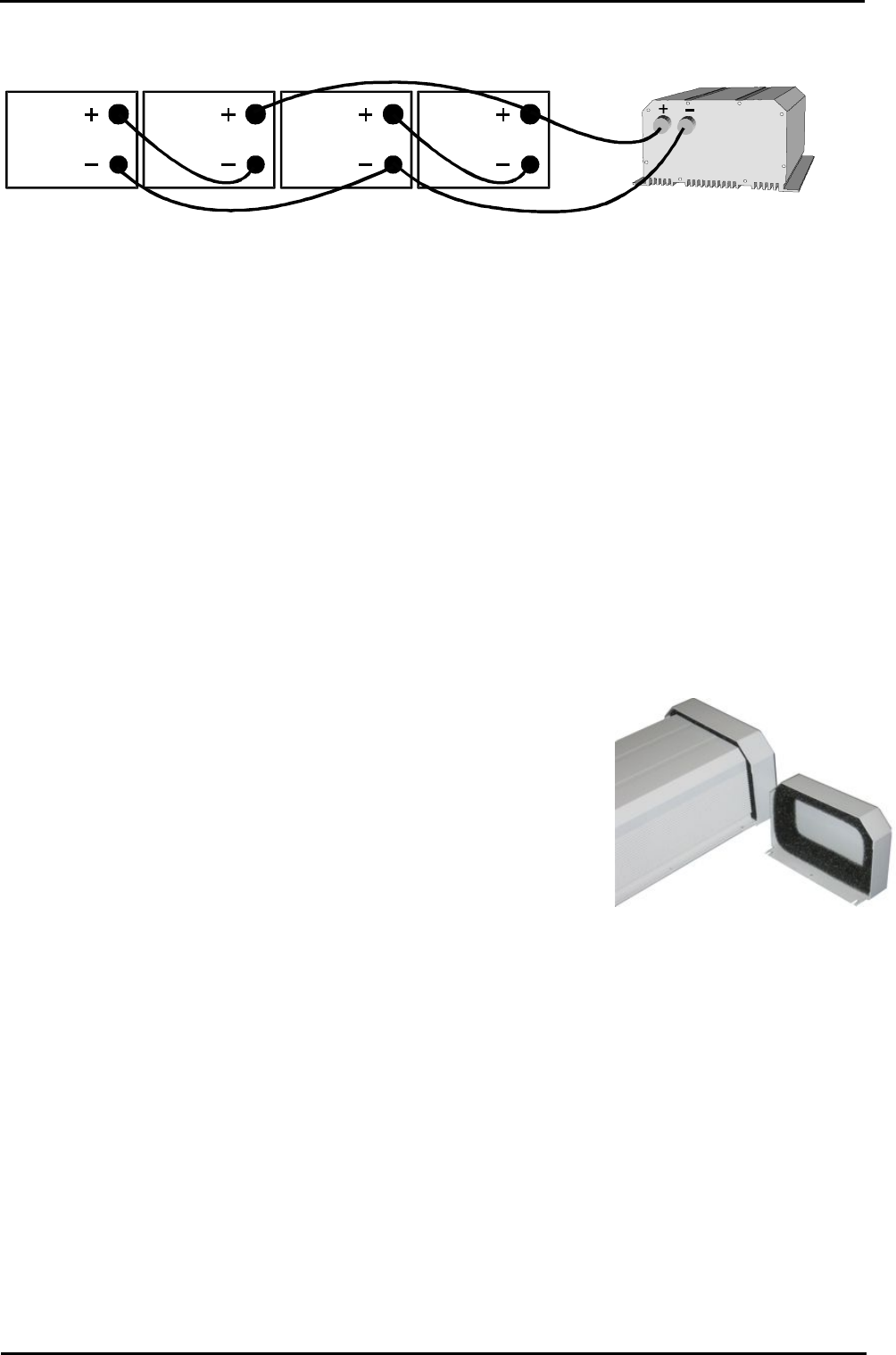
STUDER INNOTEC
COMPACT
COMPACTCOMPACT
COMPACT
User manual COMPACT V2.0 E 8
2.3.3 Parallel- Series Connection:
3 Assembly
3.1 Place of assembly
The location of the COMPACT must be chosen by the following criteria:
Protection from unauthorized handling.
Dry dust free room, no condensation.
Never install directly over the battery and never in a cabinet together with the batteries.
Keep ventilation holes free. The ventilation of COMPACT is designed in such a way that it can only
work efficiently when the appliance is fully laying on its back.
In mobile installation it is important to keep the vibrations down to as low as possible.
3.2 Fixing
3.2.1 Compact
Basically the COMPACT can be installed in any desired location. Preferred is that the appliance be
wall mounted with battery cables downwards. The COMPACT is fixed on the wall with four screws
through the four holes (dia. 5.5mm) which are accessible from the outside. In motor vehicles
COMPACT must be fixed on vibrations reducing elements. The COMPACT must not be fixed on a
combustible base, as the back of the casing can get hot and reach up to 80 degree Celsius.
3.2.2 Protection cover IP23
This cover IP23 (Order ref. CIP-23) can be easily installed after
the fixation of the COMPACT. For that’s release a little the too
screws down and more the tow up. Then it’s possible to pass the
IP 23 cover between the COMPACT and the wall. The cover must
touch the screws. Lock on the four screws, it’s ready.
3.3 Connection
3.3.1 General instructions on connecting
The cable connection on the terminals AC INPUT / AC OUTPUT / 15A 230VAC are carried out
with a screwdriver Nr.1 and the connection on the SOLAR terminal with a screwdriver Nr.2.
The conductor cross section on the terminals AC INPUT / AC OUTPUT / 15A 230VAC of the
connecting cable must be minimum. 2.5mm
2
.
All connecting cables and also the mounted battery cables , must be fixed with strain relief clamps.
The COMPACT is delivered with battery cables already connected.
The battery cables must never be extended. If the extension is unavoidable then the conductor
cross section must be elevated accordingly.
To protect the battery cable, a fuse corresponding to the conductor cross section must be fixed
directly on to the battery.
All cables must be tightly screwed in place. For safety, an yearly control is recommended. In
mobile installations control must be carried out more often.
Connecting must be done by qualified personnel. Material such as cable, connectors and
distribution boxes, fuses etc. used in the installation must comply with the respective valid low-
voltage installation rules and regulations.
12V 12V 12V 12V
24V


















